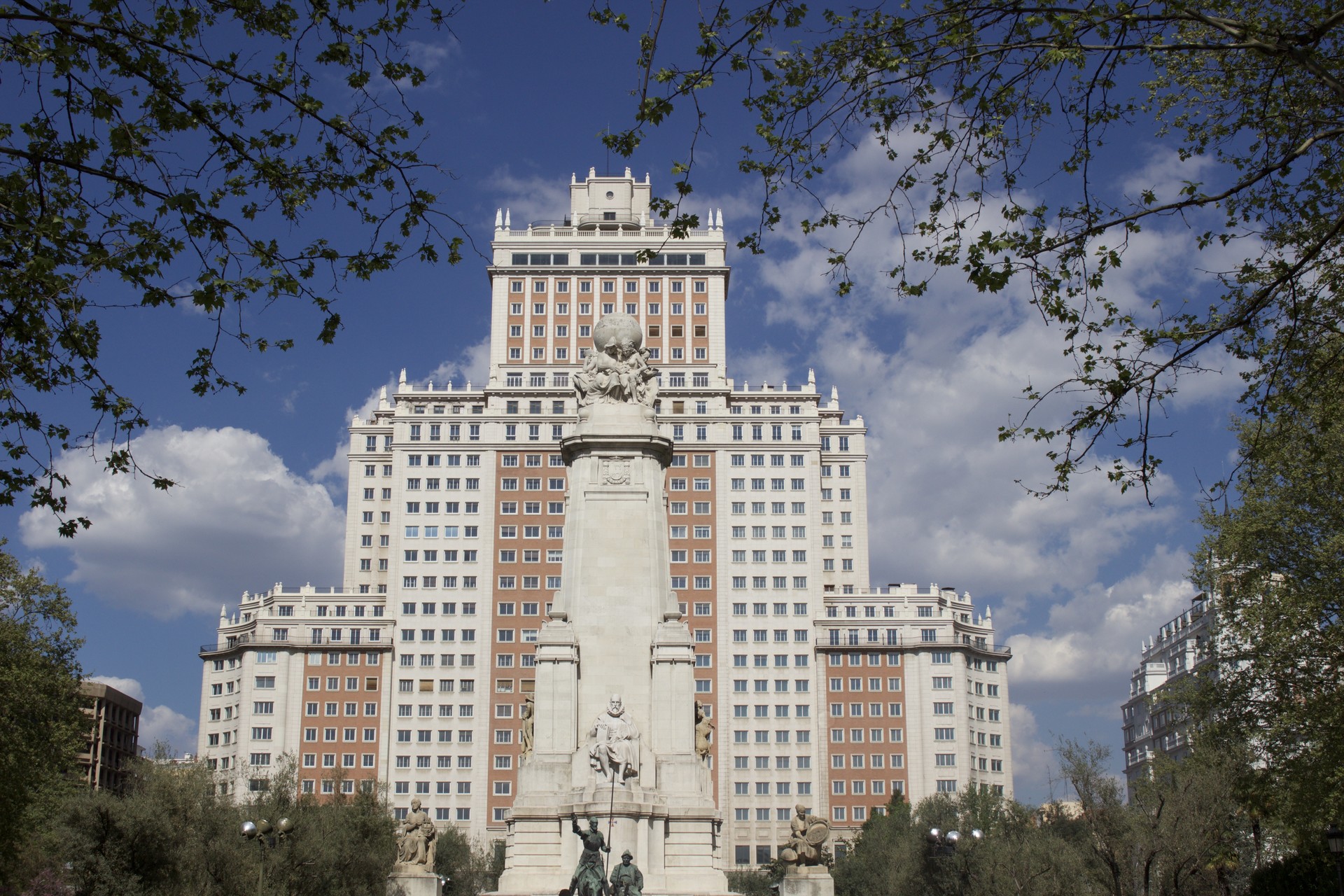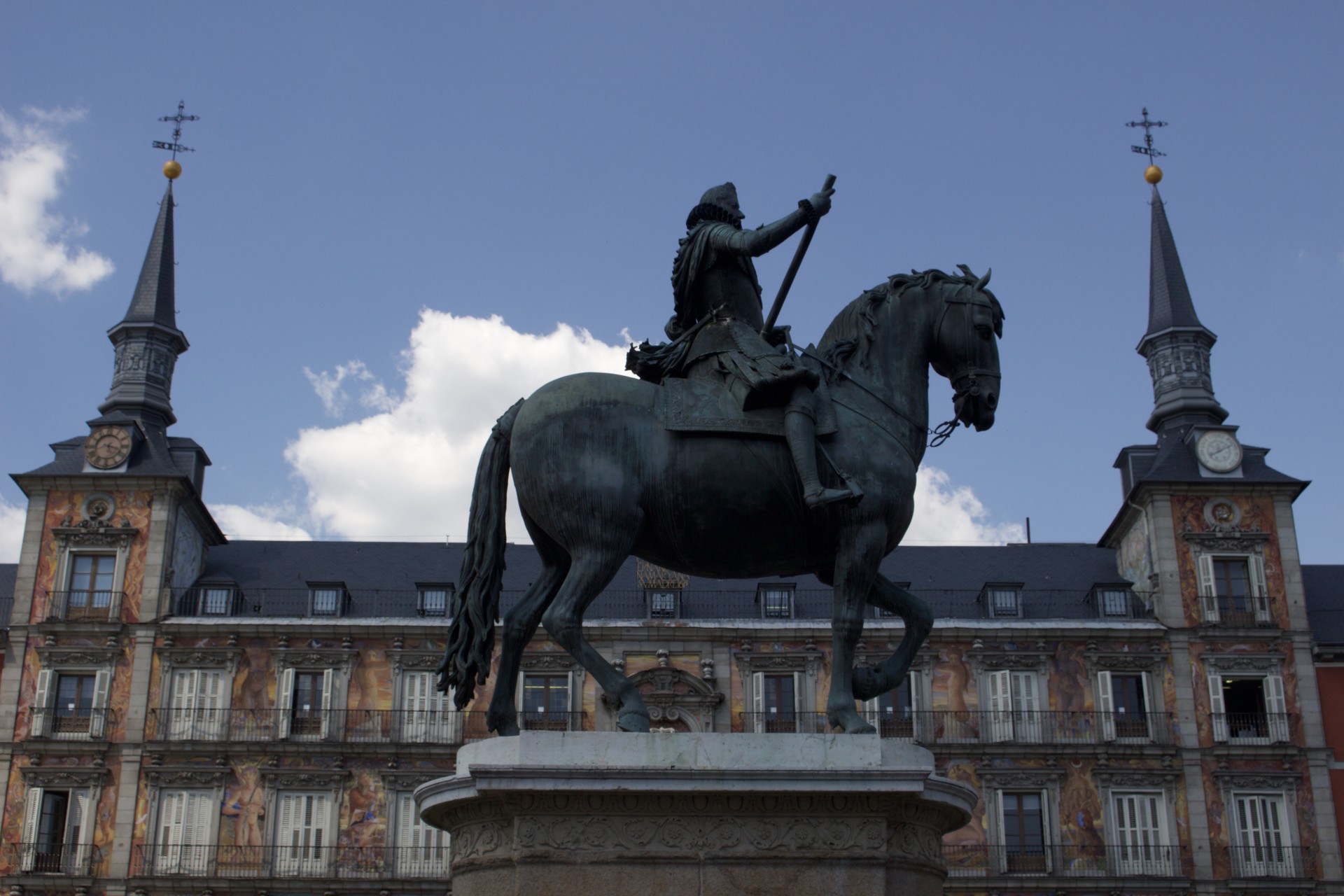Top 10 Things to see in Madrid
Templo de Debod
The Temple of Debod is situated just minutes away from the Palacio real, and it is an Egyptian temple that dates back to the 2ndCentury BC. It was built in Egypt and the chapel was dedicated to the god Amun and the goddess Isis. When the Aswan Dam was built in Egypt, the Egyptian government gave the temple as a gift to the city of Madrid saving it from the floods. It is a beautiful construction with intricate motifs on the walls. I would recommend going to see this when the sun is setting as it creates a magical colour with the reflection on the water.
Entry: Free entry

Palacio Real
The Palacio Real is the most elegant, majestic and important building in Madrid. It is the official residence of the Spanish Royal Family however they do not live there; they use the palace for state cerimonies. Historically this building was used as a fortress to protect the city of Toledo from the Christians and in the fourteenth century it was named as the Antiguo Alcázar. When Charles I came to reign he transformed this fortress into a permanent residence for the Spanish Royal Family in 1561.
Unfortunately in the eighteenth century a large fire destroyed the Palace and its reconstruction was commissioned by King Philip V.
The architecture is largely eighteenth century baroque and rococo style. This palace is a complex made up of various architectural masterpieces such as the beautiful large staircase leading up to the various rooms that was designed by Sabatini, famous Italian architect. The Throne Hall is a room that features a fresco ceiling painted by Giovan Battista Tiepolo, and many precious Neapolitan ornaments, Venetian chandeliers, mirrors etc. The ballroom is a large room that joins up three smaller rooms and it is decorated with Flemish tapestries of the sixteenth century. It is a room that really stuns you with its beauty. Furthermore the Music Room contains some beautiful musical instruments such as the guitar embellished with eighteenth century mother-of-pearls.
The Royal Chapel is a richly decorated room with large marble columns and beautifully golden covered walls.
Location: Calle de Bailén
Opening Times:
October-March: Monday- Sunday: 10. 00-18. 00
April-September: 10. 00-20. 00
Tickets:
Adults: 10 Euros
Reduced: 5 Euros
Free Entry:
October-March: Monday-Thursday: 16. 00-18. 00
April-September: Monday-Thursday: 18. 00-20. 00

Mercado de San Miguel
Located on Plaza de San Miguel, the Market is an old food market that today houses gastronomic specialities such as Caviar stands, Crab stands, flower stands, oyster stands, patisserie, sushi, tapas and many more stands to discover. Come here to spend some time admiring all the stands and maybe try some of the delicacies such as the Spanish Gulas from the Alevín Cocina Creativa stand n. 37. When i came i was enticed by so much delicious food, especially the little fried tapas or the meat stand which had cones filled with little sausages. This is a fun experience for a quick lunch during your siteseeing!
Puerta de Alcalà
The Puerta de Alcalà, located in Plaza de la Independencia was one of five entrances to the city. Originally built in the sixteenth century, Carlos III ordered a reconstruction of the gate in the eighteenth century. He commissioned the Italian architect, Sabatini to design this new gate that was finally completed in 1769.
The large plaque in the middle of the gate reads “Rege Carlo III ANNO MDCCLXXVIII”, which commemorates the date of the inauguration of the gate by King Carlos III. One of madrids landmark, this gate joins up Plaza de la Independencia with Plaza de Cibeles.
Real Basilica de San Francisco el Grande
This basilica is an example of neoclassical architecture in Spain of the eighteenth century. It is a beautifully decorated basilica; with a stunning collection of art in the interior and a large dome that places it amongst the top three largest domes in the world. The artwork is also composed of stunning works of art painted by one of my favourite artist: Francisco Goya, and others such as Velázquez, Zurbarán and Luca Giordano. The guided tour is a good idea to gather information about this basilica and the importance of the precious interior. Do not forget to look up at the interior of the dome, which is carefully decorated with frescos.
Location: Plaza de San Francisco
Ticket: 3 Euros
Catedral de la Almudena
Also known by the incredibly long name “La Santa Iglesia Catedral Metropolitana de Santa Maria la Real de la Almudena”, is a neoclassical church completed in the twentieth century. It began to be constructed in the sixteenth century however, after Madrid was declared the capital of Spain, however it was only after Toledo gave Madrid permission to build the church it was rebuilt in Neo-Gothic style in 1883. This church is dedicated to the Almudena Virgin, a medieval icon of the Virgin Mary. In 1944 the church was subject to modifications, matching the style to the neoclassical architecture of the Palacio Real. The church was finally completed in 1993. The interior of the cathedral still bares the neo-gothic style with a large nave and side chapels decorated with statues of contemporary artists. The Neo-Romanesque crypt houses a 16thcentury of the Almudena Virgin. The site also houses a museum, which aims to explain the history of the church and its patrimonial goods.
Location: Calle Bailén,
Ticket to the church: Free entry
Ticket to the museum:
Adult: 6 Euros
Reduced: 4 Euros

Palacio de Cristal del Retiro (Parque del Retiro)
The Retiro Park is the biggest park of Madrid and it is one of the most enchanting parks I have visited. It was designed in 1636 by a Spanish noble called Conde-Duque de Olivares. There are various activities you can do in the park whether it is having a picnic sat in the sun, whether it is playing football in the football pitch or taking a rowing boat across the lake.
Inspired by the British Crystal Palace of London, the Palacio de Cristal is a large glass and metal structure situated in the middle of the Retiro Park in Madrid. Designed in 1887 by Ricardo Velázquez Bosco, this site was built aiming to exhibit tropical flora and fauna from the Philippines. Today, the Cristal Palace exhibits artwork from the Reina Sofia museum.
Plaza de Cibeles
One of my favourite buildings is located here in Plaza de Cibeles. The square is one of the most historically important squares of the city. The fountain located in the middle of the square was designed by the architect Ventura Rodriguez in 1782. This fountain represents the Goddess Cibeles standing on a carriage being pulled by two lions. It has a decorative function yet it is also an area where many game victories, especially Real Madrid, are celebrated.
The large, elegant building you see in this square was inaugurated in the beginning of the twentieth century and was initially the headquarters of the Spanish Post office and Telegraph Company. However since 2007 it became the offices of the Madrid City Council. On the top of the building there is a beautiful rooftop terrace where you can go and have a drink and capture one of the most spectacular views of the city.
Plaza de España
Plaza de España is a square located in the centre of Madrid. It is home a monument dedicated to the one of the greatest Spanish novelists “Miguel de Cervantes Saavedra”. This sculpture of the novelist portrays himself looking over two bronze sculptures of Don Quixote on his horse and Sancho Panza on his mule, thereby proudly standing over his literary creations.
Furthermore the square holds two of the tallest buildings of the city “Torre de Madrid”, built in 1957 and the “Edificio España” completed in 1953.

Plaza Mayor
Plaza Mayor is a beautifully architected square situated in the heart of the city centre. You can reach this square from Calle de Toledo and Calle Cava Baja Cuchilleros. It was initially called Plaza del Arrabal in the fifteenth century and it was a prominent market of the city. In the seventeenth century, the architect Juan Gómez de Mora created some designs for the square alongside Juan de Herrera and they slowly designed what we see today as Plaza Mayor. There are a few very important sites to note for example the Statue of Felipe III on his horse, created in 1616 as a gift to the Spanish King. There also is “Casa de la Panderia”, built in 1590 and was one of the most important bakeries of Madrid. Its façade was designed by Carlos Franco and it depicts murals that represent mythological figures connected to the Madrid’s history. Today this houses Madrid’s tourist centre therefore for any information come here.
Finally, the third important site in this square is the Arco de Cuchilleros, which is one of the entries to the square. The name, cuchilleros relates to the cutler’s workshops that were once situated in this square, and who supplied knives to the butchers in Plaza Mayor.

Photo gallery
Content available in other languages
- Español: Las 10 mejores cosas que ver en Madrid
- Italiano: 10 cose da non perdere a Madrid
Want to have your own Erasmus blog?
If you are experiencing living abroad, you're an avid traveller or want to promote the city where you live... create your own blog and share your adventures!
I want to create my Erasmus blog! →




















Comments (0 comments)